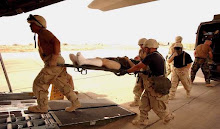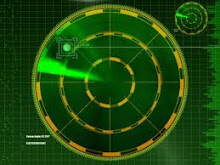From the initial research phases to implementation of operational activities, several code names were given to this secret project on human consciousness. It was begun the mid-1970s and continued through the mid-1990s. (Some researchers say the efforts may have continued under even greater security.)
Information about this program publicly surfaced in 1995 and entered into public awareness.
What was it and how did it get started? In response to robust research on extrasensory perception (ESP) or “anomalous cognition” in the Soviet Union, U.S. intelligence initially wanted to determine that the Soviets were wasting their time and money on “psychic spying” and other research into human consciousness.
To the initial dismay of some CIA officers, U.S. researchers were surprised to learn that the Soviets were on to something very significant. As a result, the small secret program that later came to be known as Project STAR GATE was intermittently funded by the U.S. Army, Navy, Air Force, Defense Intelligence Agency (DIA) and CIA during the ’70s, ‘80s and ‘90s.
EXPANDED AWARENESS
There was natural skepticism about the program inside the U.S. defense and intelligence communities. The value of research and operational activities was questioned, even though the amount of dollars invested in the project was quite small.
When information about the program became public, some people again questioned the wisdom of the relatively modest expenditures involved. There was speculation that it was yet another example of wasteful Pentagon spending.
However, today we have significant evidence that Project STAR GATE helped uncover a whole new understanding of the human mind and the abilities of perception and awareness that we all have to one degree or another.
The Project STAR GATE teams developed a protocol for using the human mind to gather intelligence. They called it “remote viewing.” They found that people with particularly good natural and/or acquired aptitude in this area could obtain accurate information about persons, places, things and situations at a distance using only their consciousness.
It was not 100 percent accurate – far from it. But enough solid information was obtained in many cases to clearly demonstrate that people can accurately perceive things from afar.
Remote viewing has been compared to the more common feelings we often experience: hunches, gut instincts and intuition.
In the years since Project STAR GATE became public, a much greater awareness of the potential of the human mind has steadily expanded throughout America. Many credible books about remote viewing and Project STAR GATE have been published and read by millions. TV shows and movies have tackled the subject, sometimes with mixed results. Training programs (not all of them reliable) have been available to the general public.
BANG FOR THE BUCK
Project STAR GATE has been the subject of defense-related academic research as well. A graduate-level paper for the Marine Corps War College was written in 2001 by a Navy SEAL officer. The paper was titled “Unconventional Human Intelligence Support: Transcendent and Asymmetric Warfare Implications of Remote Viewing.” The author coined the term “transcendent warfare” to describe the identification and utilization of new and emerging discoveries to enhance success of U.S. defense activities.
In 2010, another graduate-level paper was prepared for the National Defense Intelligence College titled “Anomalous Human Cognition: A Possible Role Within the Crucible of Intelligence Collection.” This research report provided updated perspectives on the roles of expanded human consciousness in national security matters.
Many other reports of various kinds have been written about Project STAR GATE, remote viewing and anomalous cognition efforts.
One such worthwhile article appeared in the summer 2001 edition of “The Intelligencer,” the Journal of U.S. Intelligence Studies of the Association of Former Intelligence Officers (AFIO). The article, “CIA-Initiated Remote Viewing at Stanford Research Institute” by Project STAR GATE researcher Hal Puthoff, Ph.D., presented a solid overview of the program.
From the modest funding for initial research, the program was able to keep going over the years by way of additional funds that appear to have been very minimal considering the implications and eventual outcomes we see today.
Americans have received tremendous “bang for the buck” from Project STAR GATE.
The idea of transcendent warfare related to remote viewing research seems truly applicable now in efforts to make intelligent use of defense dollars available. Ways in which human consciousness can be used to enhance U.S. defense and American society as a whole sometimes appear to be unlimited.
This return on investment from the early days of Project STAR GATE may not be on the radar of all Americans at this time. However, by taking a good look at these efforts, it seems clear that the smart use of defense monies can be more important than unwise massive expenditures on activities that can sap our national strength rather than enhance it.



































































































































































































